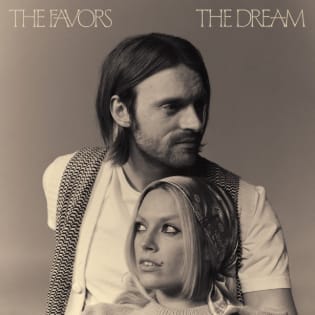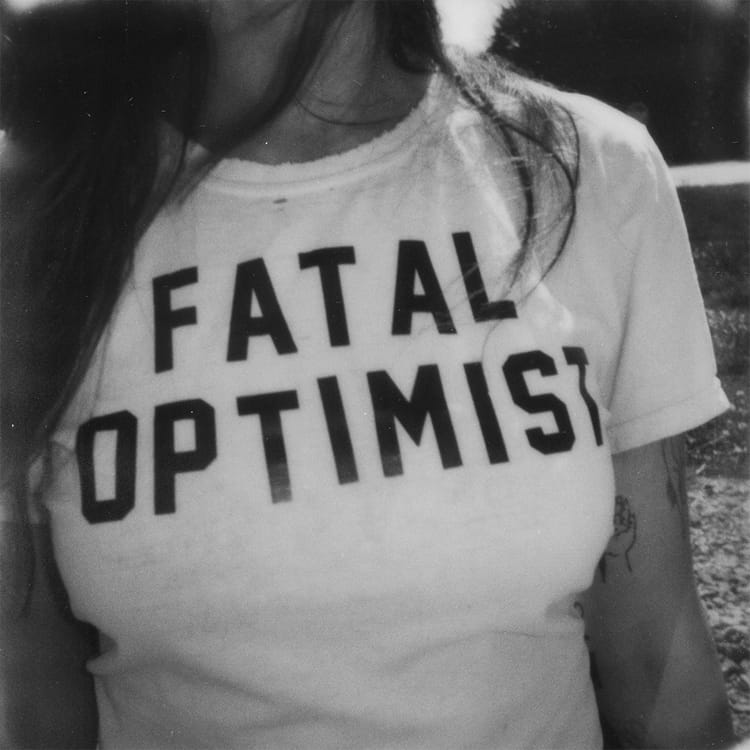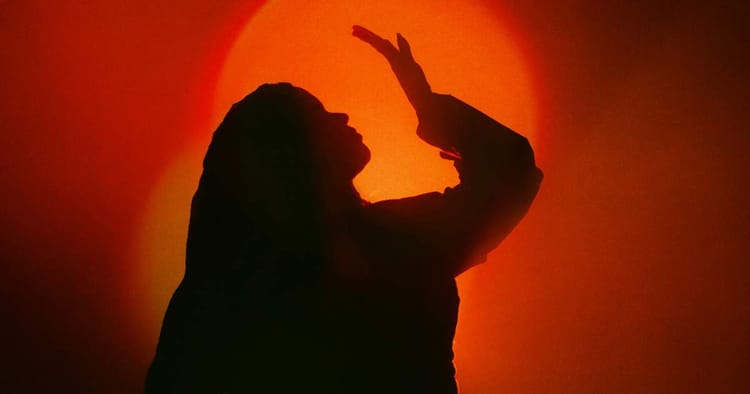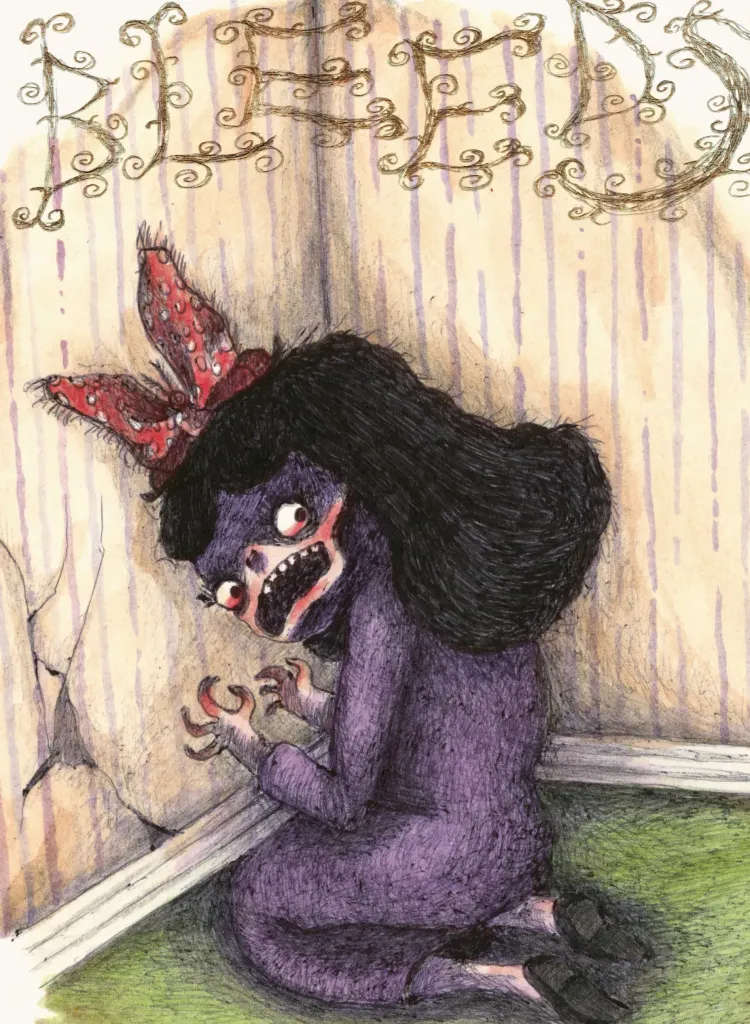The Dream by The Favors: An In-Depth, Track-by-Track Analysis

Introduction: Setting the Scene
It’s September 2025, and the world is buzzing with the kind of restless energy that only comes when summer fades into fall. The music scene is a kaleidoscope of fleeting trends, but something real cuts through the noise: The Dream, the debut album from The Favors, a supergroup formed by Ashe and Finneas. Released on September 19, 2025, through Darkroom Records, this record feels like a Polaroid snapshot of a moment—raw, intimate, and unpolished in the best way. It’s a love letter to the ghosts of past relationships, to New York’s gritty romance, and to the sheer joy of making music with someone who gets you.
The Favors came together almost by accident, born from a spark in 2021 when Ashe and Finneas collaborated on “Till Forever Falls Apart” for Ashe’s Ashlyn. By early 2025, cryptic Instagram posts from a mysterious account, @weshouldmakeaband, teased something big. Vintage camcorder clips of the duo in the studio, coy hints on their socials, and a surprise performance of the unreleased “Lake George” at Finneas’s Los Angeles show fueled the hype. When The Dream was officially announced in June, it felt like a secret finally let loose. This album matters because it’s not just a collection of songs—it’s a testament to creative chemistry, a middle finger to industry cynicism, and a reminder that sometimes the best art comes from saying, “Screw it, let’s start a band.”
Thematically, The Dream is a departure from Ashe’s introspective Wilson and Finneas’s polished For Cryin’ Out Loud!. It’s darker, heavier, and steeped in philosophical musings on love, loss, and the baggage we carry from our pasts. The duo trades in soft rock with a touch of country twang, disco flourishes, and even a jazz detour, all woven together by their seamless vocal harmonies. The album’s tone is nostalgic yet urgent, like a late-night conversation with an old flame you haven’t quite let go of. The cover art—a grainy, sepia-toned shot of Ashe and Finneas on a New York rooftop, looking like they’re sharing a private joke—sets the stage for an album that feels like a shared secret.
Buckle up, because this track-by-track journey through The Dream is going to dig deep into the heart of what makes this record sing, ache, and linger.
1. Restless Little Heart (0:55)
Initial Impressions: This brief opener is more of a mood-setter than a standalone track, a fleeting whisper that pulls you into the album’s world. It’s not a showstopper, but it’s the perfect aperitif, priming you for the emotional ride ahead.
Lyrics Analysis:
With only 55 seconds to work with, “Restless Little Heart” doesn’t waste time. The lyrics are sparse but evocative: “Restless little heart, chasing shadows in the dark” (© 2025 Darkroom Records). It’s a poetic sketch of yearning, setting the album’s theme of chasing something—or someone—just out of reach. The imagery of shadows suggests a search for meaning in the murky corners of memory, a recurring motif across the record.
Melody and Musicality:
The track is built on a simple acoustic guitar riff, layered with Ashe’s breathy vocals and Finneas’s understated harmonies. The tempo is slow, almost hesitant, like the first steps into a new story. The minimal instrumentation—think fingerpicked strings and a faint hum of reverb—creates a sense of intimacy, like you’re eavesdropping on a late-night jam session.
Issue Relevance:
The song’s brevity mirrors the fleeting nature of infatuation, a theme that resonates in today’s culture of swipe-right romances and transient connections. It’s a nod to the restlessness of modern love, where hearts chase fleeting moments of connection without pausing to reflect.
Insights & Anecdotes:
In interviews, Finneas mentioned that this track was one of the first they recorded, almost as a warm-up to test their chemistry in the studio. Ashe described it as “the sound of us finding our footing,” a sentiment that shines through in its unpolished charm.
Personal Evaluation:
This track hit me like a Polaroid developing in real time—fuzzy at first, but full of promise. It’s not meant to linger, but it sets the tone beautifully, like the first sip of a strong drink. Emotionally, it feels like the ache of anticipation, and it does its job perfectly.
Summative Evaluation:
“Restless Little Heart” is a cohesive, if fleeting, introduction to The Dream. Its strength lies in its simplicity, though its brevity leaves you wanting more. It’s a teaser, not a main course, but it whets the appetite for what’s to come. Rating: 75/100
2. The Dream (3:19)
Initial Impressions: The title track is a bold statement, a sprawling soft rock anthem that feels like the heart of the album. It’s a standout, carrying the weight of the duo’s ambitions and their knack for storytelling.
Lyrics Analysis:
“Hard not to feel pathetic, maxing out your credit card on someone’s beverage / Sold your guitar just to pay for that video you sent to the studio” (© 2025 Darkroom Records). These lines paint a vivid picture of desperation and delusion, a dreamer chasing a Hollywood fantasy while drowning in reality. The song’s narrative feels like a critique of the American Dream, where ambition often leads to self-destruction. The references to LA’s 4100 bar and “David’s brother” add a layer of insider humor, grounding the song in a specific, almost cinematic world.
Melody and Musicality:
The track opens with a driving acoustic rhythm, bolstered by Ricky’s electric guitar riffs and David’s steady drum pulse. Ashe and Finneas trade vocals with a conversational ease, their harmonies blending like old friends swapping stories. The bridge—a chaotic, run-on sentence of a melody—mimics the spiraling thoughts of its protagonist, a masterstroke of musical storytelling.
Issue Relevance:
The song’s exploration of failure and pretense speaks to the modern hustle culture, where social media amplifies the pressure to “make it.” It’s a raw commentary on the cost of chasing dreams in a world that rewards appearances over substance.
Insights & Anecdotes:
Ashe revealed in a podcast that the song was inspired by a late-night brainstorming session where the group riffed on the absurdity of LA’s wannabe culture. Finneas noted that the “4100” reference was a playful jab at a bar they all found hilariously nondescript, with Ashe insisting on vagueness to avoid sounding too niche.
Personal Evaluation:
This track hit me square in the chest. It’s raw, funny, and heartbreaking all at once, like catching up with a friend who’s still chasing a dream you know won’t pan out. Intellectually, it’s a sharp critique; emotionally, it’s a gut punch. It achieves its goal of making you root for its flawed characters.
Summative Evaluation:
“The Dream” is a near-perfect blend of wit, melody, and narrative. Its cohesion is airtight, though the dense lyrics might alienate casual listeners. Still, it’s a standout that sets a high bar for the album. Rating: 83/100
3. Moonshine (3:06)
Initial Impressions: “Moonshine” brings a touch of country twang to the album, serving as a transitional track that keeps the momentum going. It’s not the flashiest, but its understated charm grows with each listen.
Lyrics Analysis:
“Moonshine in my bloodstream, burning through the midnight haze” (© 2025 Darkroom Records). The lyrics lean into rustic imagery, evoking late-night drives and forbidden love. The moonshine metaphor suggests intoxication—not just by liquor, but by passion and nostalgia. It ties into the album’s theme of grappling with past loves, though it’s less specific than other tracks.
Melody and Musicality:
The song’s mid-tempo groove is anchored by a twangy guitar lick and subtle pedal steel, giving it a Southern Gothic vibe. Ashe’s vocals are warm and inviting, while Finneas’s harmonies add a layer of melancholy. The arrangement is sparse but effective, letting the lyrics breathe.
Issue Relevance:
The song’s nod to escapism through alcohol and love feels timeless, but it resonates in today’s world, where many turn to substances or fleeting romances to cope with uncertainty. It’s a quiet reflection on self-medication and its consequences.
Insights & Anecdotes:
Finneas shared that “Moonshine” was written in a single afternoon, inspired by a road trip playlist heavy on Chris Stapleton and Gillian Welch. Ashe noted that the song was a chance to flex her Nashville roots, bringing a bit of her adopted hometown into the mix.
Personal Evaluation:
“Moonshine” feels like a warm night under a starry sky, bittersweet and fleeting. It didn’t grab me immediately, but its subtle beauty crept up on me. It’s a song that rewards patience, though it lacks the narrative punch of the title track.
Summative Evaluation:
A solid, if unremarkable, addition to the album. “Moonshine” shines in its simplicity but doesn’t quite reach the heights of the standouts. It’s cohesive and well-crafted, but it feels like a breather rather than a centerpiece. Rating: 82/100
4. The Little Mess You Made (3:21)
Initial Impressions: The lead single and my personal favorite, “The Little Mess You Made” is the album’s crown jewel. It’s a soaring, emotional powerhouse that showcases The Favors at their peak.
Lyrics Analysis:
“You left a little mess, a stain I can’t erase / Every corner of my heart’s got your fingerprints” (© 2025 Darkroom Records). The lyrics are raw and confessional, dissecting the aftermath of a relationship that lingers like a stubborn stain. The metaphor of a “mess” is both intimate and universal, capturing the chaos of love and loss. The song’s narrative arc feels like a therapy session, raw and unfiltered.
Melody and Musicality:
The track builds from a delicate piano intro to a cathartic, full-band climax. Ashe and Finneas’s voices intertwine like a dance, their harmonies soaring over lush strings and a driving rhythm section. The production is polished but not overdone, letting the emotion take center stage.
Issue Relevance:
In a world obsessed with closure, this song embraces the messiness of unresolved feelings. It’s a reminder that love doesn’t always wrap up neatly, a message that hits hard in an era of ghosting and half-finished conversations.
Insights & Anecdotes:
Ashe performed a snippet of this song during her opening set for Gracie Abrams in Australia, while Finneas did the same in Germany, creating a transcontinental tease that drove fans wild. Finneas called it “the song that made the album real,” written in a burst of inspiration after a late-night talk about heartbreak.
Personal Evaluation:
This song wrecked me. It’s the kind of track that makes you want to call your ex at 2 a.m., then think better of it. The emotional weight is palpable, and the duo’s chemistry is electric. It’s everything a lead single should be.
Summative Evaluation:
“The Little Mess You Made” is a triumph—cohesive, emotionally resonant, and musically stunning. It’s the album’s high point, though it sets an almost unfair standard for the rest. Rating: 86/100
5. The Hudson (3:36)
Initial Impressions: A gorgeous, wistful ballad, “The Hudson” is a standout that feels like the album’s emotional core. It’s a love song to a person, a place, and a moment that can’t be recaptured.
Lyrics Analysis:
“I don’t know what I believe, please have faith in me / The only truth I know is you” (© 2025 Darkroom Records). These lines are pure poetry, blending spiritual doubt with romantic devotion. The imagery of bare trees and frozen lakes evokes a stark, wintry New York, while the balcony scene—“You took my coat, sit on the balcony / I’d catch a cold if it keeps you warm”—is achingly tender. The song is a meditation on love as a fleeting truth in a world of uncertainty.
Melody and Musicality:
The track’s gentle acoustic strums and soaring strings create a cinematic swell, with Ashe and Finneas trading verses like two sides of a conversation. The tempo is slow but deliberate, mirroring the song’s reflective mood. The live take, recorded in a single session, captures their raw chemistry.
Issue Relevance:
The song’s exploration of faith and love resonates in a polarized world, where belief systems—whether religious or personal—are constantly tested. It’s a plea for connection in the face of doubt, a message that feels urgent today.
Insights & Anecdotes:
Ashe wrote the first lines on a walk in LA, inspired by Simon & Garfunkel’s Bookends. Finneas called it “her song,” with his contributions serving to amplify her vision. The duo recorded it on a couch while Claudia baked an olive cake, a vignette that infuses the track with warmth.
Personal Evaluation:
“The Hudson” broke me open. It’s the kind of song that makes you want to hold someone close and never let go. Its beauty lies in its simplicity and honesty, and it feels like a prayer you didn’t know you needed.
Summative Evaluation:
A near-perfect ballad, “The Hudson” is cohesive, emotionally devastating, and musically sublime. Its only flaw is that it ends too soon. Rating: 83/100
6. Ordinary People (1:29)
Initial Impressions: This jazz-inflected interlude is a delightful curveball, a playful palate cleanser that stands out for its brevity and charm. It’s not a cornerstone, but it’s a gem.
Lyrics Analysis:
“You say we’re no good for each other, you’re too selfish for a lover / Don’t worry, I’ll be early, I’m not ready, but I’ll wait” (© 2025 Darkroom Records). The lyrics are light and flirty, a call-and-response dialogue between two lovers who can’t quite commit. The humor—especially Ashe’s giggle on the live take—adds a layer of authenticity to the fictional narrative.
Melody and Musicality:
The track’s jazzy piano and brushed drums evoke a smoky lounge, with Ashe and Finneas trading vocals like a modern-day “Baby, It’s Cold Outside.” The live take, complete with Ashe’s laugh, feels like a candid moment caught on tape.
Issue Relevance:
The song’s playful take on romantic indecision feels like a nod to the modern dating scene, where commitment is often deferred for the sake of freedom. It’s a lighthearted counterpoint to the album’s heavier themes.
Insights & Anecdotes:
Written in an hour on Finneas’s couch while Claudia prepped for a Halloween party, this track was a spontaneous experiment. Finneas insisted on keeping the demo’s live take for its raw joy, a decision that pays off.
Personal Evaluation:
“Ordinary People” is pure fun, a moment of levity that makes me smile every time. It’s not profound, but it doesn’t need to be—it’s a snapshot of two friends having a blast.
Summative Evaluation:
Short but sweet, “Ordinary People” is a cohesive detour that adds texture to the album. Its brevity is both its strength and its limitation. Rating: 76/100
7. Necessary Evils (3:13)
Initial Impressions: A brooding, mid-tempo track, “Necessary Evils” dives back into the album’s darker themes. It’s a transitional piece, bridging the lighter moments to the heavier ones.
Lyrics Analysis:
“Some things we do, we don’t want to / Necessary evils just to get through” (© 2025 Darkroom Records). The lyrics explore the compromises we make to survive heartbreak, from casual hookups to white lies. The language is stark and confessional, tying into the album’s theme of confronting uncomfortable truths.
Melody and Musicality:
The track’s moody electric guitar and pulsing bassline create a tense atmosphere, with Ashe and Finneas’s harmonies adding a layer of resignation. The tempo picks up in the chorus, reflecting the urgency of moving on despite the pain.
Issue Relevance:
The song’s focus on moral ambiguity speaks to the gray areas of modern relationships, where people often justify bad behavior to cope with loss. It’s a raw reflection on the human condition.
Insights & Anecdotes:
Finneas mentioned that this track was inspired by a late-night conversation about the “ugly things we do to feel okay.” Ashe noted that it was one of the harder songs to write, requiring them to dig into personal vulnerabilities.
Personal Evaluation:
This track hit me like a quiet confession in a dive bar. It’s not flashy, but its honesty is disarming. It captures the messy reality of moving on, and it lingers like a bruise.
Summative Evaluation:
“Necessary Evils” is a solid, introspective track that fits the album’s narrative arc. It’s cohesive but lacks the spark of the standouts. Rating: 80/100
8. Times Square Jesus (4:15)
Initial Impressions: A sprawling, acoustic-driven epic, “Times Square Jesus” is a standout that blends humor, heartache, and poetic ambiguity. It’s a highlight that rewards repeated listens.
Lyrics Analysis:
“Everybody knows that you’re my weakness / You’re an open secret, I’m afraid / Every time I walk by Times Square Jesus, he tells me to confess before my grave” (© 2025 Darkroom Records). The song’s central image—a street preacher in Times Square—serves as a metaphor for guilt and self-reckoning. Lines like “The house your daddy built is under water / No use trying not to be your mother’s daughter” delve into familial baggage and the weight of past loves. The lyrics are opaque yet evocative, inviting listeners to project their own stories onto the song.
Melody and Musicality:
The track’s acoustic guitar riff, born from Finneas’s spontaneous jamming, is both haunting and infectious. The tempo is deliberate, with Ricky’s guitar flourishes and David’s understated drums adding texture. Ashe and Finneas’s harmonies are at their peak here, weaving in and out like a conversation.
Issue Relevance:
The song’s exploration of guilt and confession resonates in a culture obsessed with public shaming and personal redemption. It’s a reminder that our secrets—open or not—shape who we are.
Insights & Anecdotes:
The song’s writing process was a group effort, with Ashe and Ricky competing against Finneas and David to write the best verse. Ashe’s line “Of course, I still pick up your mother from the airport” was a favorite of Finneas’s, grounding the song’s abstract themes in a poignant, human moment.
Personal Evaluation:
This song is a journey. It’s funny, sad, and deeply human, like catching a glimpse of someone’s soul in a crowded city. It made me laugh, then ache, then think. It’s everything I want from a song.
Summative Evaluation:
“Times Square Jesus” is a masterpiece of storytelling and melody. Its cohesion and emotional depth make it one of the album’s best, though its length might test casual listeners. Rating: 80/100
9. David’s Brother (3:37)
Initial Impressions: A cheeky, upbeat track, “David’s Brother” is a fan favorite for its infectious energy and sly humor. It’s a standout that keeps the album’s momentum high.
Lyrics Analysis:
“Made a joke and took a shot, what a way to learn your lesson / Who you are and who you’re not” (© 2025 Darkroom Records). The lyrics tell the story of a night out gone wrong, where the protagonist runs into an ex and their new fling—David’s brother. The song’s humor lies in its specificity, with references to LA bars and nepo babies adding a layer of satire. It’s a playful take on the album’s theme of post-breakup regret.
Melody and Musicality:
Ashe’s piano chords set the tone, with Finneas taking over to let her focus on vocals. The track’s upbeat tempo and jangly guitar riffs create a barroom vibe, while the harmonies add a touch of wistfulness. The rhythm section, driven by David’s drums, keeps it lively.
Issue Relevance:
The song’s nod to social hierarchies and the absurdity of LA’s scene feels timely in a world where status and connections often dictate success. It’s a lighthearted jab at the privilege we encounter daily.
Insights & Anecdotes:
The track’s title came from a riffing session where David suggested his brother as a stand-in for the bar’s name, turning a private joke into a universal one. Ashe called the writing process “like watching the Three Stooges,” with the trio’s camaraderie shaping the song’s playful vibe.
Personal Evaluation:
This song is a blast, like a night out with friends that ends in a story you’ll tell for years. It’s not the deepest cut, but its energy and wit are infectious. I couldn’t stop smiling.
Summative Evaluation:
“David’s Brother” is a cohesive, fun addition that balances the album’s heavier moments. Its humor and energy are its strengths, though it lacks the emotional weight of other tracks. Rating: 79/100
10. Lake George (4:19)
Initial Impressions: A haunting, narrative-driven ballad, “Lake George” is a standout that feels like the album’s emotional climax. It’s a deeply personal story told through a fictional lens.
Lyrics Analysis:
“I’ve seen the place you were born / I know the streets that raised you” (© 2025 Darkroom Records). The lyrics are a love letter to someone who’s no longer in your life, but whose history you carry. The imagery of Lake George—a real place in New York—grounds the song in a specific sense of loss and nostalgia. It’s a masterclass in storytelling, blending personal and universal.
Melody and Musicality:
The track’s slow, deliberate tempo and acoustic foundation create a somber mood, with Finneas’s piano and Ashe’s soaring vocals carrying the emotional weight. The strings, arranged by Paul Cartwright, add a cinematic sweep that elevates the song to epic status.
Issue Relevance:
The song’s focus on memory and identity speaks to the way we define ourselves through our relationships. In a world where people move on quickly, it’s a reminder to honor the past.
Insights & Anecdotes:
Ashe wrote the initial verse and chorus on a walk, inspired by Simon & Garfunkel. Finneas called it “the last piece of the puzzle,” written late in the process but shaping the album’s narrative arc.
Personal Evaluation:
“Lake George” broke my heart in the best way. It’s a song that feels like a memory you didn’t know you had, tender and devastating. It’s one of those tracks you play on repeat, trying to hold onto the feeling.
Summative Evaluation:
A stunning, cohesive track, “Lake George” is a highlight that ties the album’s themes together. Its length is its only flaw, but it earns every second. Rating: 76/100
11. Someday I’ll Be Back In Hollywood (3:31)
Initial Impressions: Featuring Marinelli, this track is a reflective, mid-tempo number that bridges the album’s narrative arc. It’s not a standout but holds its own with its introspective vibe.
Lyrics Analysis:
“Someday I’ll be back in Hollywood, chasing dreams I never could” (© 2025 Darkroom Records). The lyrics explore the pull of ambition and the inevitability of returning to where you started. It’s a quieter reflection on the album’s themes of dreams and regret, with Hollywood as a metaphor for unattainable goals.
Melody and Musicality:
Marinelli’s guitar work adds a warm, nostalgic tone, while Ashe and Finneas’s harmonies keep things intimate. The tempo is steady, with a subtle build that mirrors the song’s theme of longing. It’s understated but effective.
Issue Relevance:
The song’s focus on returning to one’s roots resonates in a culture where reinvention is constant but often fleeting. It’s a reminder that our pasts always call us back.
Insights & Anecdotes:
Finneas noted that Marinelli’s contribution was a last-minute addition, bringing a fresh perspective to the track. Ashe called it “a love song to LA,” reflecting her complex relationship with the city.
Personal Evaluation:
This track feels like a quiet moment of reflection after a long night. It didn’t grab me like the standouts, but its warmth and sincerity make it a grower. It’s a solid, if unflashy, addition.
Summative Evaluation:
“Someday I’ll Be Back In Hollywood” is cohesive and well-crafted, but it lacks the spark of the album’s best tracks. It’s a solid bridge to the closer. Rating: 79/100
12. Home Sweet Home (3:28)
Initial Impressions: The disco-infused closer is a bold, upbeat send-off that feels like a victory lap. It’s a standout that leaves you smiling and wanting more.
Lyrics Analysis:
“Home sweet home, where the heart breaks slow / Dancing in the dark, where nobody knows” (© 2025 Darkroom Records). The lyrics blend nostalgia with defiance, painting a picture of a Lower East Side bar where memories and new beginnings collide. It’s a celebration of survival, tying into the album’s theme of moving on.
Melody and Musicality:
The track’s pulsing bassline and shimmering synths give it a disco edge, a departure from the album’s soft rock core. Ashe and Finneas’s vocals are playful and confident, with Ricky’s guitar adding a gritty counterpoint. It’s a joyous, danceable finale.
Issue Relevance:
The song’s celebration of resilience feels like an anthem for anyone who’s weathered heartbreak and come out stronger. In a world that often feels heavy, it’s a reminder to dance through the pain.
Insights & Anecdotes:
Written in a group session, this track was a collaborative effort that captured the band’s camaraderie. Finneas called it “the party we wanted to throw,” while Ashe noted that it was inspired by their shared love of New York’s dive bars.
Personal Evaluation:
“Home Sweet Home” is a blast, like the last drink of the night shared with friends. It’s not the deepest cut, but its energy and joy are infectious. It left me hopeful and ready to hit repeat.
Summative Evaluation:
A cohesive, uplifting closer, “Home Sweet Home” ends the album on a high note. Its genre shift is bold but effective, though it might not resonate with everyone. Rating: 86/100
Final Thoughts
The Dream is a remarkable debut from The Favors, a testament to Ashe and Finneas’s creative chemistry and their willingness to take risks. It’s not perfect—“The Little Mess You Made” and “The Hudson” set a high bar that not every track meets—but its cohesion, emotional depth, and sheer joy make it a standout in 2025’s crowded music landscape. This is an album that feels like a conversation with old friends, full of laughter, tears, and the kind of stories that linger long after the music stops. Here’s to hoping The Favors keep dreaming together.
Rating: 78/100





Member discussion